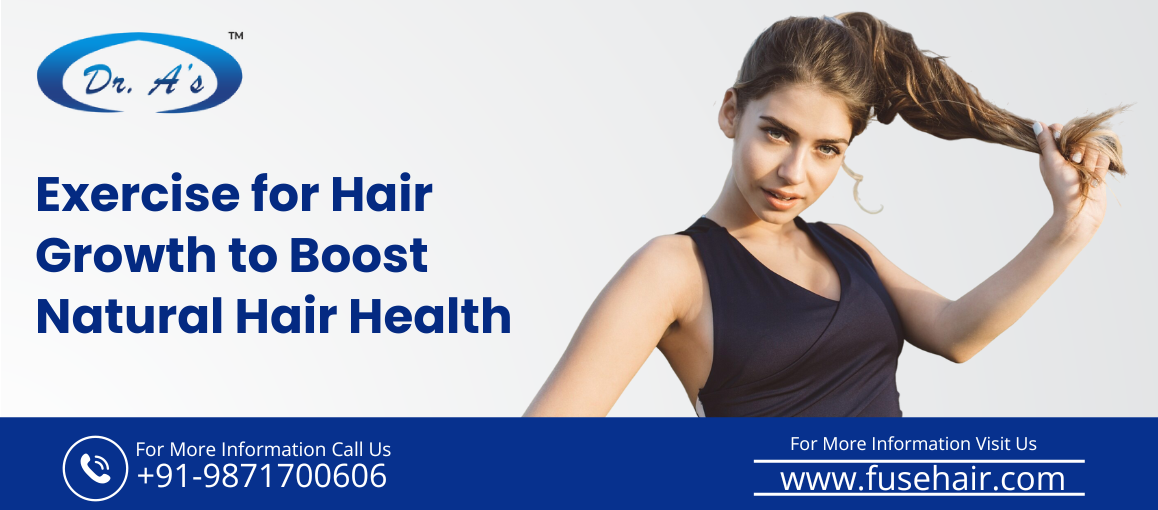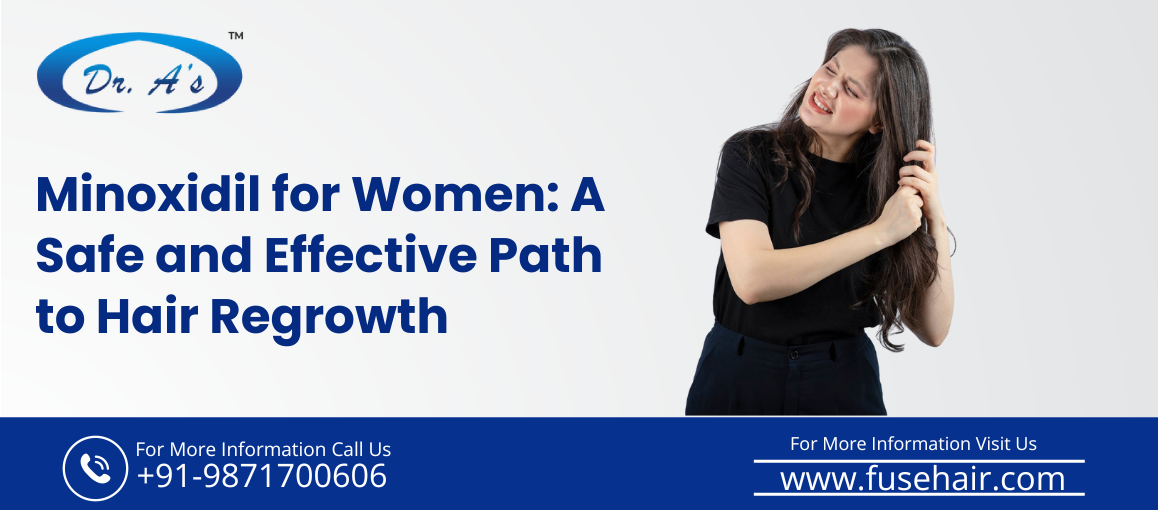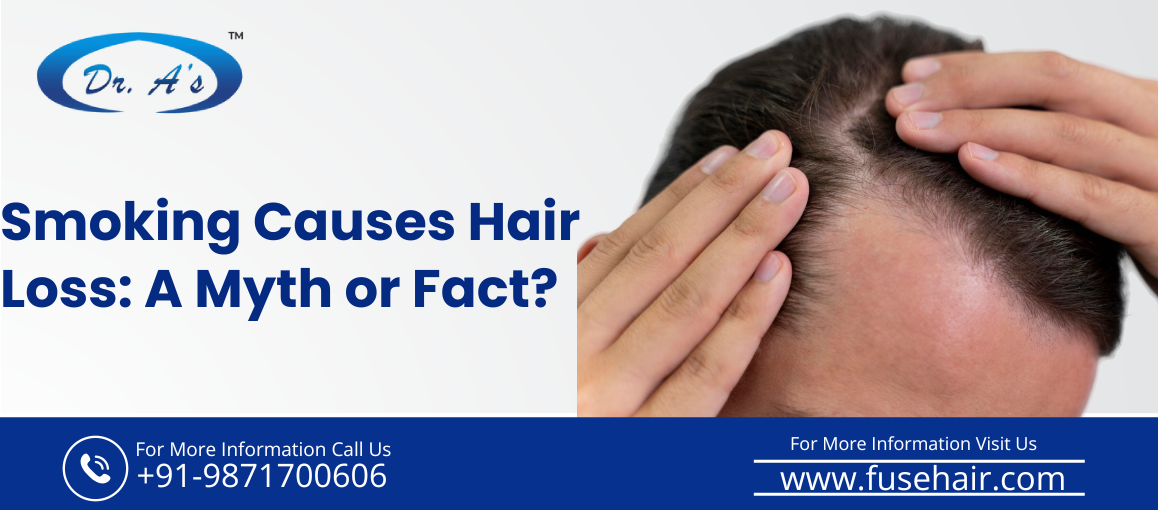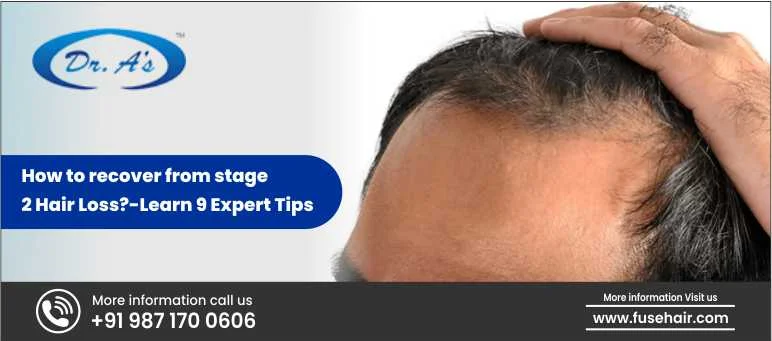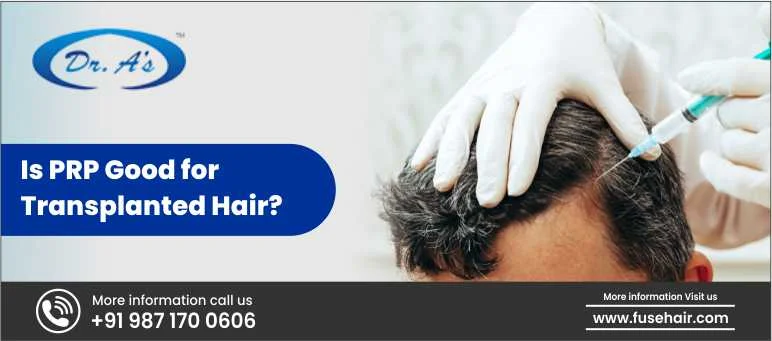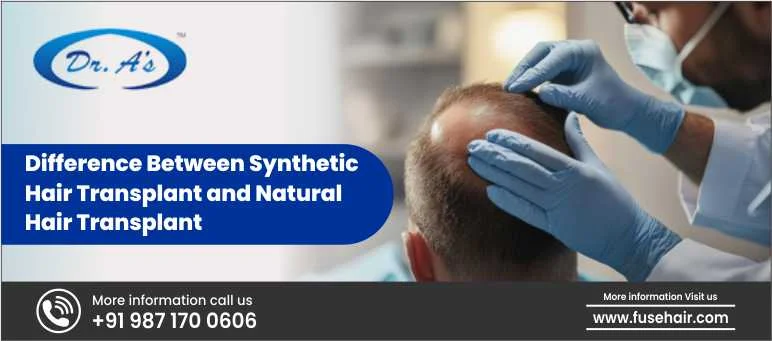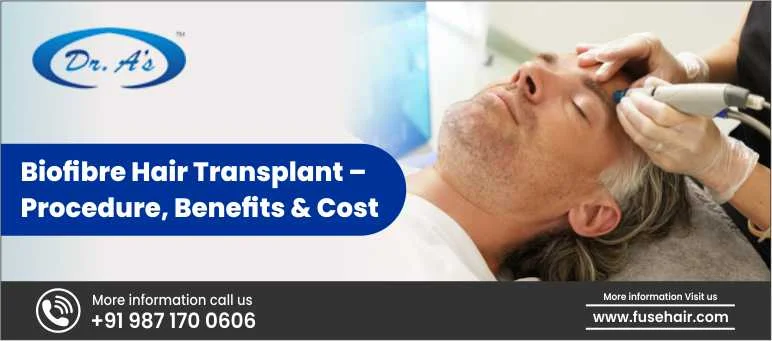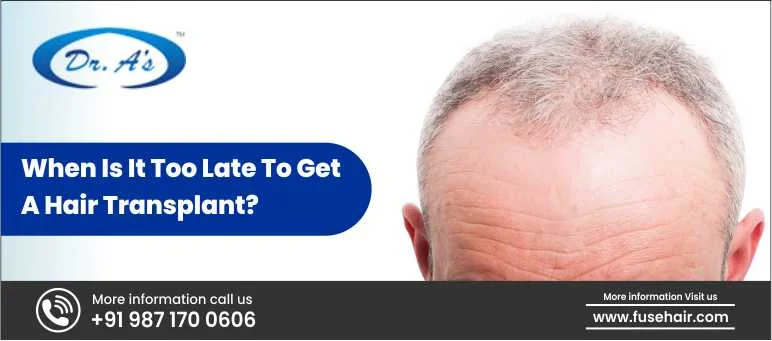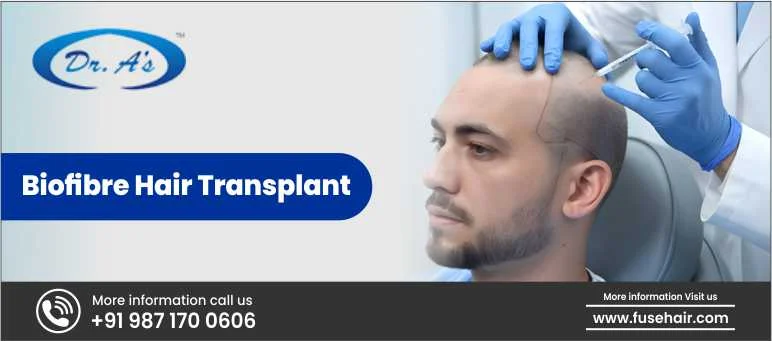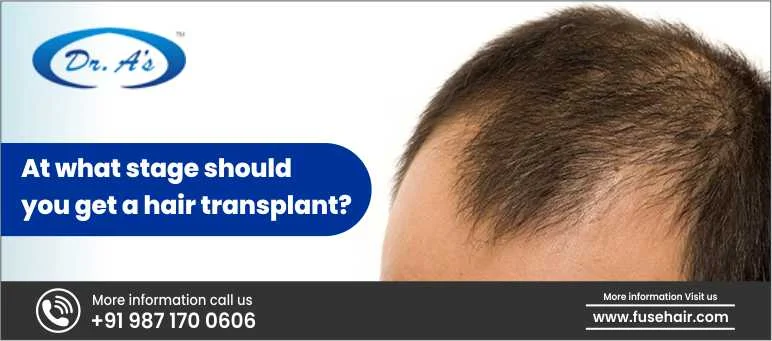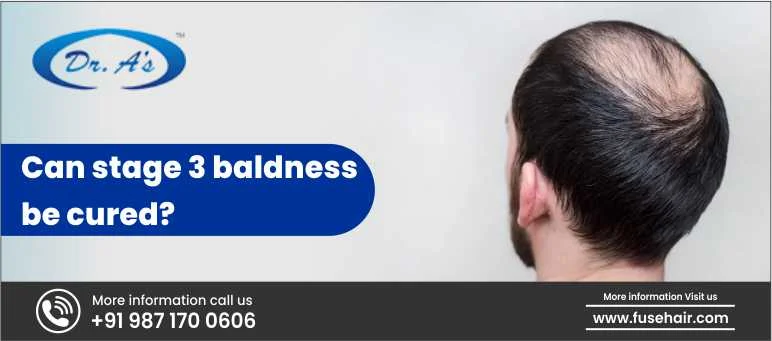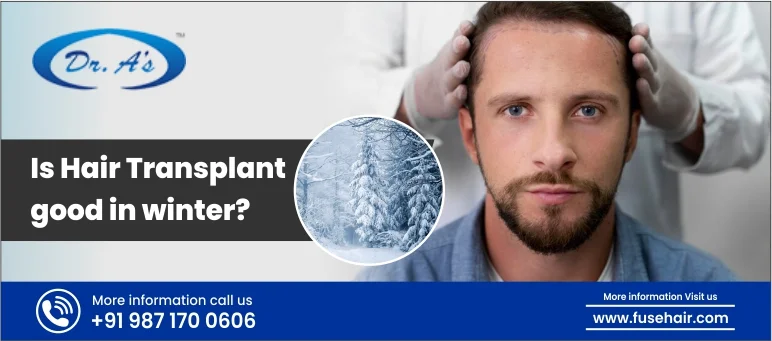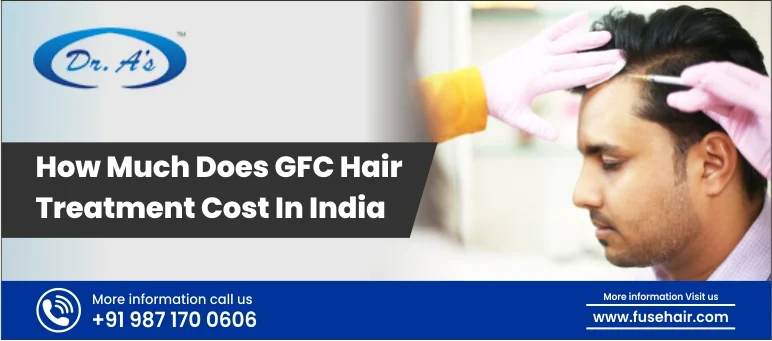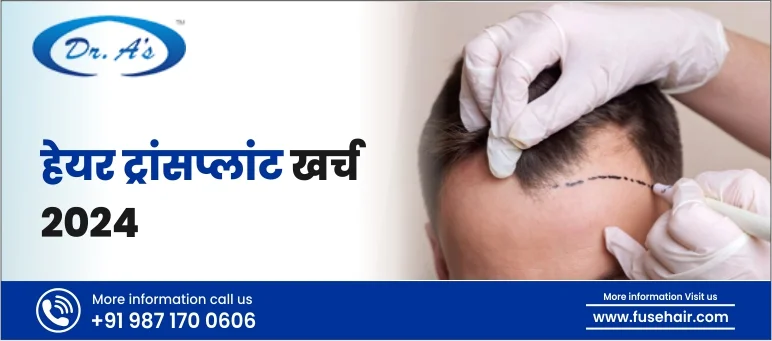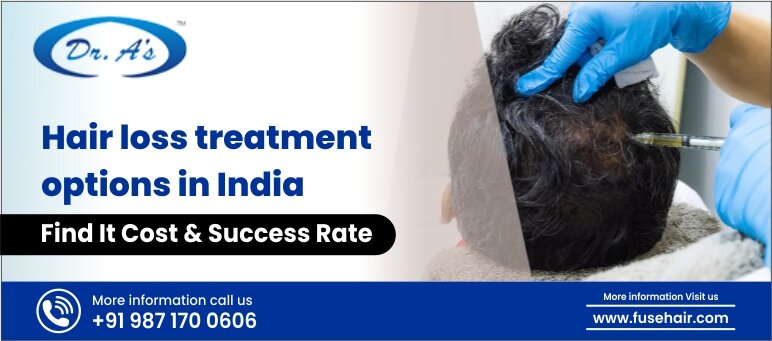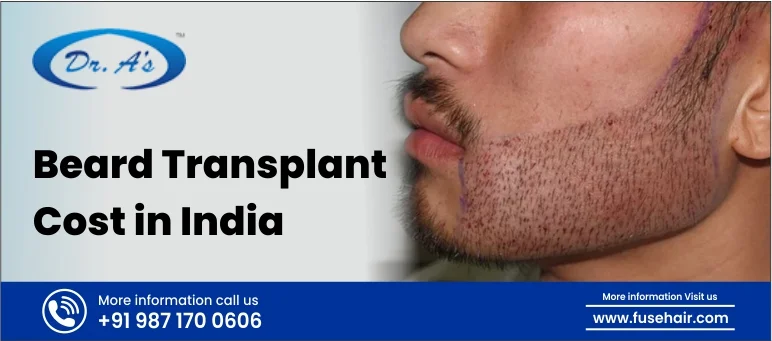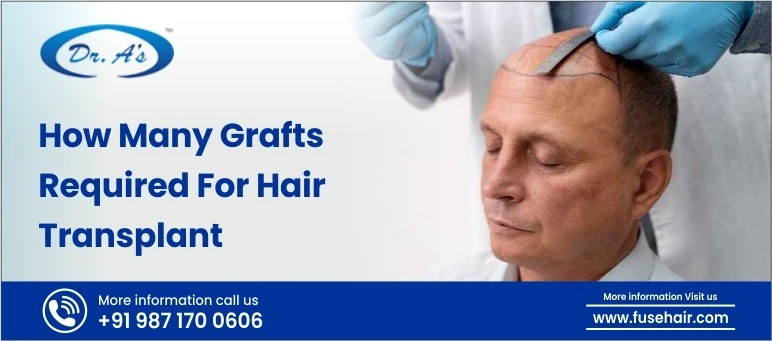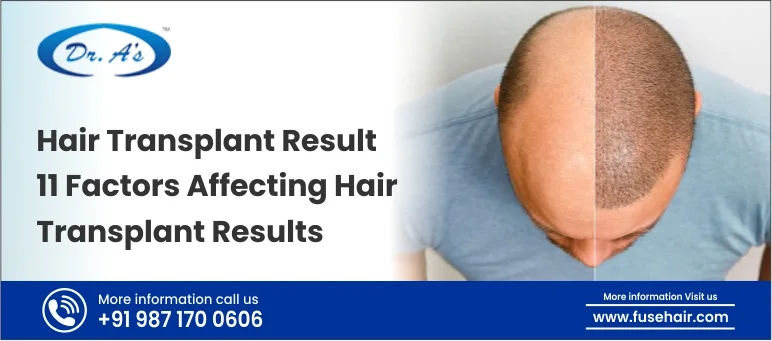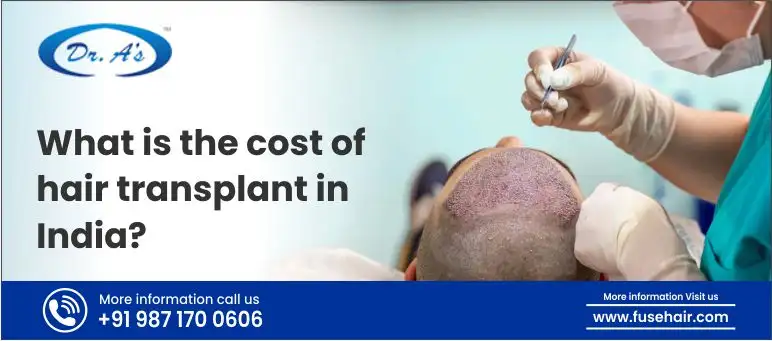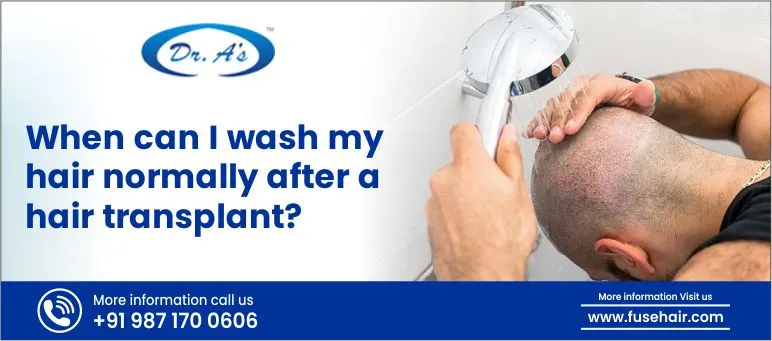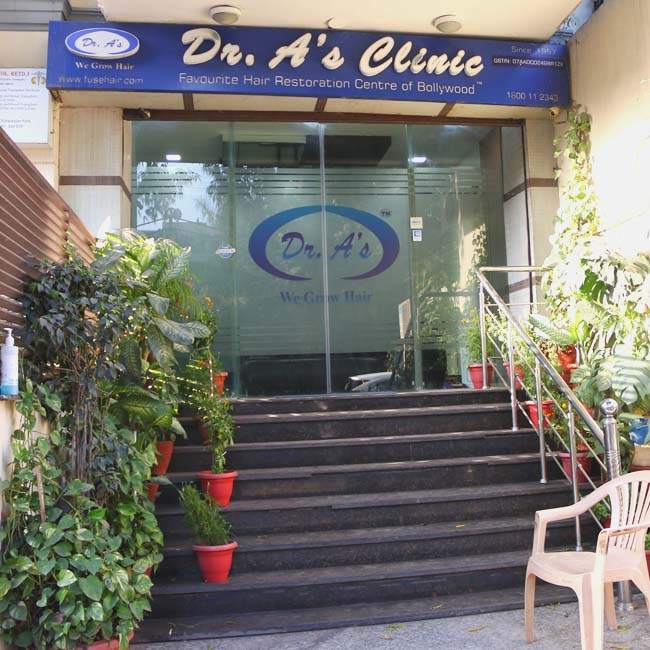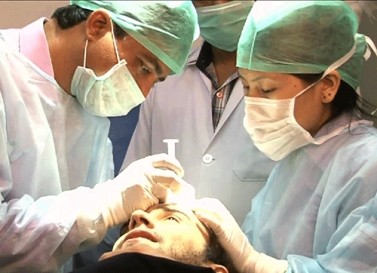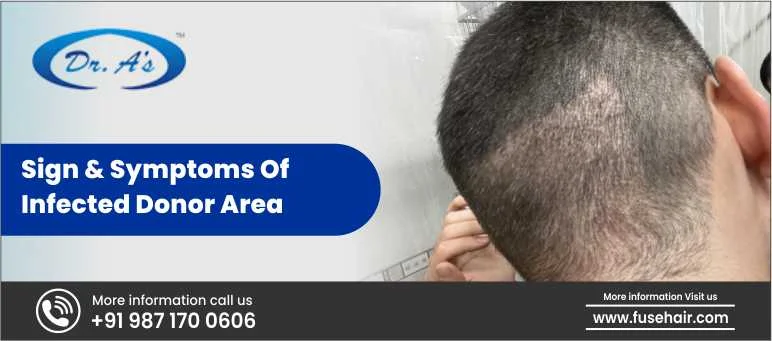
Hair transplantation is an efficient and commonly performed medical procedure focused on restoring hair growth in affected areas because of hair loss. The process involves the extraction of healthy hair follicles from the back side of the scalp, known as the donor area, and implanting them on the affected or thinning regions that show a balding pattern. Thus, the donor area is exposed to small incisions or wounds. In most cases, it is healed properly without any infection. But in some cases, complications arise and patients may get infections and experience major discomfort.
Infected donor area refers to the condition when the region is affected by bacterial, fungal, or inflammation after hair transplant surgery. This needs to be addressed properly and immediately. So, here comes Dr A’s Clinic, a trusted hair transplant clinic where Dr. Arvind Poswal delivers advanced technology-based hair transplantation treatment with post-medical procedure care as well to avoid the occurrence of infection.
In this article, we will list some essential signs and symptoms of the infected donor area for better understanding.
Donor Area in Hair Transplants: Definition & Causes of Infection
The occipital area at the back of the head is the hair transplant donor area. The term refers to the region from which grafts are extracted for the hair transplant. The grafts are small pieces of scalp hair that are used for the graft. These are called hair follicles, composed of 1 to 4 hairs. The back of the head is selected as a donor area because it has high hair density.
The posterior or occipital region is never touched because it is not a sensitive area for the hormones responsible towards hair loss. Donor area preservation is important because it helps to conduct a successful hair transplantation. However, there are certain reasons responsible for causing infection in the donor area, which will be discussed further.
Inadequate post-operative hygiene
After a hair transplant, the donor area is left open with various microincisions and linear suture lines. During the early healing phase, these incisions are open wounds which require strategic and careful hygiene processes to prevent microbial contamination. If patients touch the donor area with unwashed hands, use harsh chemical hair products, or rub the area with contaminated towels, it leads to certain risks like bacterial colonisation, overgrowth of the fungus that disrupts natural healing.
Scratching the area
Sometimes, with mild discomfort, we tend to scratch the donor area, as after the transplantation, it can feel itchy. But if you scratch the area, it disrupts the fragile healing tissue in the donor area. This is because when you are scratching the donor area, you are accidentally opening micro incisions during surgery and perhaps contaminating the skin.
Using contaminated surgical equipment
Sterile surgical tools are mandatory during a hair transplant procedure to extract hair follicles from the donor area and plant them into the recipient site. Otherwise, it contaminates the area to introduce a pathogen, breaches aseptic protocol, leading to redness or the formation of pus, which affects hair transplant success.
Allergic reactions
If any person has hypersensitivity to tropical antibiotics, then an allergic response can cause swelling, blistering, redness or itching. Certain medical tapes or bandages that are used during surgery can trigger contact dermatitis, causing the same kind of symptoms.
Key signs and symptoms of an infected donor area
The donor area is an essential part of the hair transplantation procedure. Therefore, due to the reasons mentioned above, there are occurrences of certain symptoms of infection that need immediate treatment. But how, as a patient, will you understand that your donor area is infected? So, below, we have provided a list of signs and symptoms for your comprehension.
Redness
After a hair transplant procedure, redness of the donor area is part of the healing process. But if the redness continues for more than a week up to 10 days, and it spreads outwards and the appearance becomes intense and inflamed, then it is absolutely a bacterial infection. When the donor area infection shows redness, it experiences heat around the area and discomfort. It is the early version of a visible symptom of an infection. Whenever you notice redness on your occipital area, you can consult Dr Arvind Poswal in his clinic for medical consultation.
Swelling
In the post-hair transplant procedure period, mild swelling can occur, which typically resolves within a few days. But in the donor region, if there is a localised swelling that is increasing regularly, becoming much more painful and is associated with a firm lump, then it indicates abscess formation or cellulitis. You can have sensitive skin because of the swelling. So, for that, hair transplant surgeon, Dr. Arvind Poswal, in Dr A’s clinic, would supervise the situation and plan a customized regimen for you.
Consistent and deteriorating pain
After the hair transplant session, it is normal to experience mild pain, so trichologists prescribe painkillers. The problem starts when the patients suddenly experience pain escalation that interrupts them from doing regular activities, bothers them in their sleep, and creates a deep throbbing sensation. It is mostly connected to inflammatory changes because of the infection in the donor area. When pain arises in an infected donor area, it is rooted in a small region, and it degrades when the area is stretched, touched, or even if a mild activity is performed.
Pus or discharge formation
The most definitive and clear sign of infection in any area is the occurrence of thick, yellow, green, or whitish pus or discharge. After a hair transplant in the donor area, this kind of discharge can occur because of the suture lines. The occurrence of pus or discharge oozing from tiny incisions (during surgery) has an unusual smell. Whenever this symptom is visible, it suggests that the donor area is suffering from bacterial colonisation that requires antibiotic therapy.
Fever
When you are experiencing a fever of around 100.4°F after the hair transplant, it can indicate that your donor area is becoming prone to infection. If this symptom is accompanied by sudden chills, body aches or fatigue, it suggests that you are suffering from a severe infection that requires immediate medical attention.
Inflammation in the donor area
Scab and crust formation in the donor area is normal when you are in the early healing phase of hair transplantation. But if it is kept unchecked, it gets infected, and it looks like a thick, yellow, brown crust; you also feel inflammation around the region. The inadequate maintenance of hygiene after the operation can lead to dried blood, serum and bacterial accumulation, leading to inflamed wounds and infection. In this scenario, if the harmful bacteria enter the open wounds, they can inflame the area and increase the risk towards severe infection.
Delayed healing
It is the most important symptom, and it suggests that you are suffering from an infection and need immediate medical attention. Even after two weeks of your hair transplantation procedure, if the donor area has not healed, resulting in scabs and open, raw patches that do not lead to healthy, pink skin, it suggests that your healing has been compromised due to the occurrence of an infection or inadequate postoperative care.
Bleeding
Hair transplant is an operative procedure, and the occurrence of bleeding is normal during the treatment. However, if you experience severe and continuous bleeding occurring for days after the procedure, then you should immediately consult a trichologist. It can happen if the patient is taking blood-thinning medication, and this is the reason that patients are advised not to consume any medicines before and after the heart transplant.
If you experience bleeding after the hair transplantation, do not put pressure on the scalp to stop the bleeding because it can damage the transplanted hair graft. You need to arrange an appointment with the surgeon and keep the infected area away from further exposure to avoid further damage.
Itching with associated lesions
There is a reason that even after the treatment session, the donor area is covered with bandages and tapes. It is a precautionary measure adapted to keep the donor area from infection or any other kind of issues. However, you can feel mild itching around the region, but it is considered part of the healing. But if you feel itching most of the time and these are accompanied by rash, it can indicate that you are suffering from secondary skin infection in your donor area or follicles. In the scenario, you should not scratch your infected area because it can degrade the bacterial spread.
Swollen Lymph Glands
Lymph glands or lymph nodes are body parts that are responsible for fighting infection. These nodes or glands are located at each side of the neck, under the chin, in the armpits, and also around the groin region. When an infection occurs in any part of your body, these lymph glands will swell, and you can feel pain, which is an indication of the severity of the infection. If lymph glands, especially on your neck, are swollen within days and weeks after the hair transplant procedure, an infection may have occurred, so you might go for a check-up without neglecting.
Conclusion
Both your cosmetic and medical success of the hair transplant can be compromised because of the infected donor area. Infections in the donor area are a rare condition, but they happen if there is a timely diagnosis and fast intervention. Therefore, if you recognise early signs like redness, pain, white discharge in the occipital region of your head, or any of the above-mentioned signs and symptoms, then it is mandatory to seek a doctor’s appointment.
You can book an appointment with Dr Arvind Poswal, as he diligently handles post-operative issues after every hair transplant. So if you are experiencing even one of the symptoms, go visit Dr A’s Clinic, book an appointment under his name to avoid further infection in the donor area.

